Plants can transform your living space from ordinary to extraordinary with minimal effort. You’ll discover how strategic placement of greenery, from trailing pothos on living walls to statement fiddle leaf figs in corners, creates visual impact that enhances any room’s aesthetic. Whether you’re a novice plant parent or an experienced decorator, these ten styling suggestions will help you maximize your space’s potential while bringing nature’s beauty indoors.
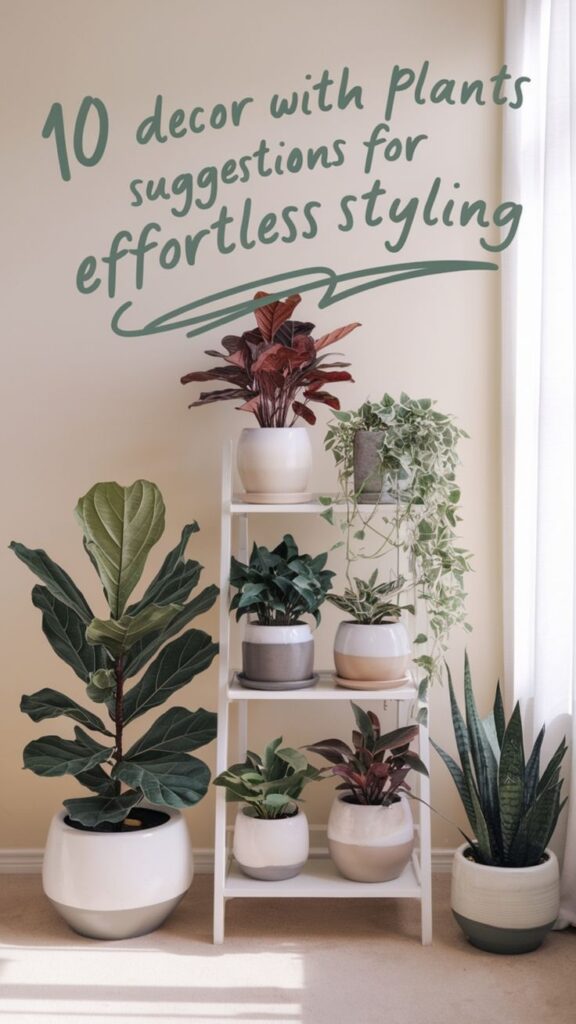
Contents
- 1 Create a Living Wall With Trailing Plants
- 2 Mix and Match Plant Heights for Visual Interest
- 3 Style Your Window Sills With Sun-Loving Varieties
- 4 Group Plants in Odd Numbers
- 5 Use Decorative Containers as Design Elements
- 6 Layer Plants With Furniture Pieces
- 7 Design Plant-Focused Centerpieces
- 8 Transform Empty Corners With Statement Plants
- 9 Incorporate Plants in Bathroom Spaces
- 10 Arrange Floating Shelves for Plant Displays
Create a Living Wall With Trailing Plants
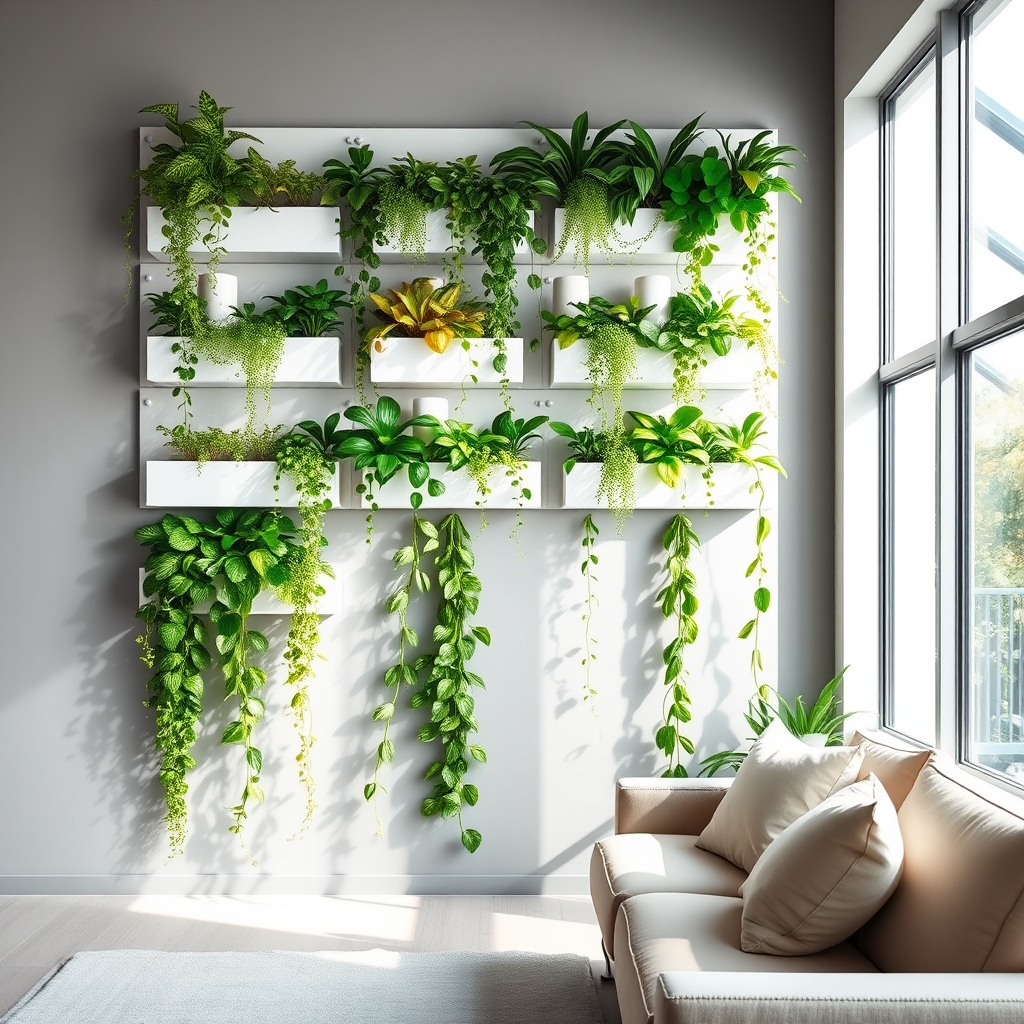
A living wall with trailing plants transforms vertical spaces into cascading gardens of greenery.
Mounted planters or wall-mounted grids support vines and trailing plants that grow downward, creating a dramatic waterfall effect of foliage.
Plants like pothos, philodendron, string of pearls, or ivy cascade naturally, covering walls with layers of leaves in varying shades of green.
This design maximizes space in small rooms while adding natural texture and dimension to bare walls.
The arrangement can be customized using different plant varieties and heights, allowing for artistic expression through botanical elements.
Essential features include proper mounting systems, adequate lighting, and strategic placement of plants to ensure healthy growth and visual impact.
Mix and Match Plant Heights for Visual Interest
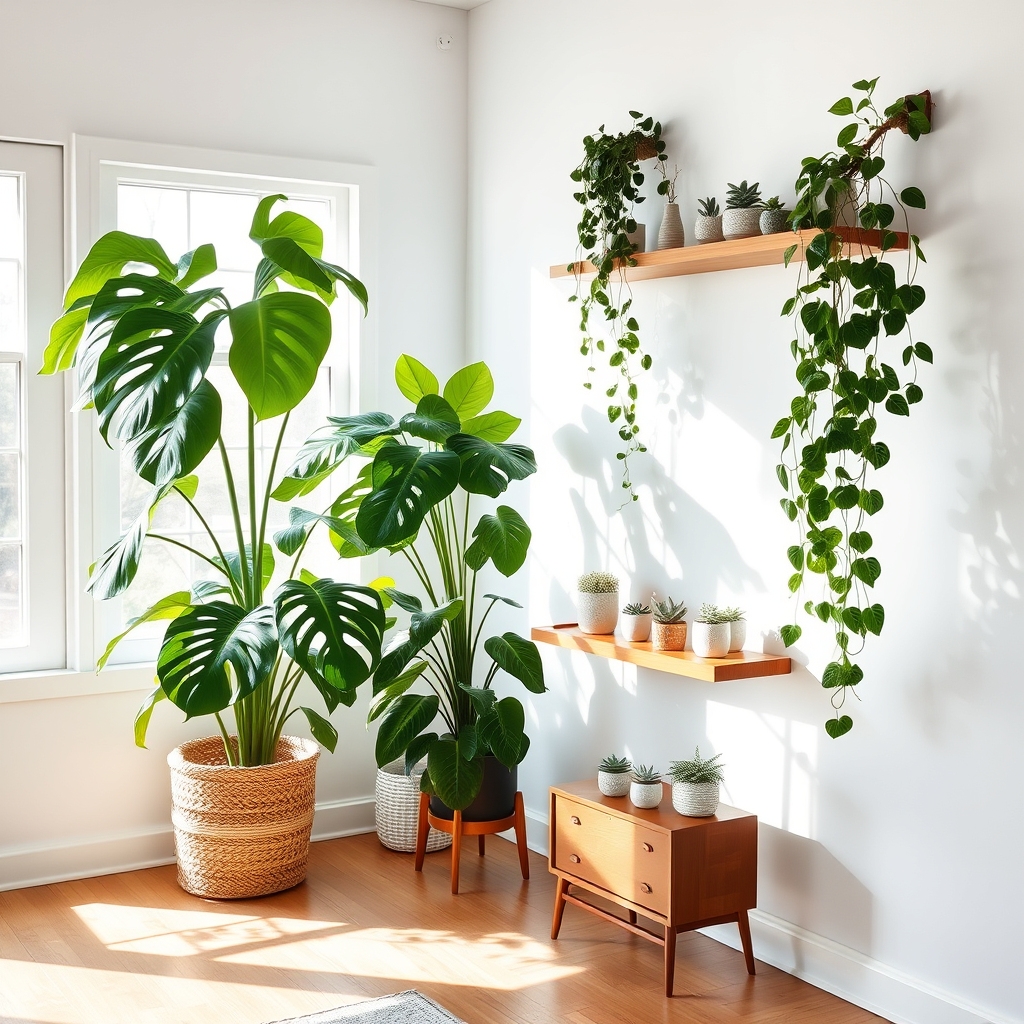
Mixing and matching plant heights creates dynamic visual layers that draw the eye throughout a space.
Tall floor plants like fiddle leaf figs or palm trees serve as striking focal points, while medium-height plants on stands or tables fill the middle ground.
Small succulents and trailing plants can occupy shelves, windowsills, and tabletops, adding depth to the overall arrangement.
This varied elevation approach prevents monotony and establishes a natural, garden-like flow within indoor spaces.
The contrast between different heights also helps define distinct zones within a room while maintaining a cohesive botanical theme.
Style Your Window Sills With Sun-Loving Varieties
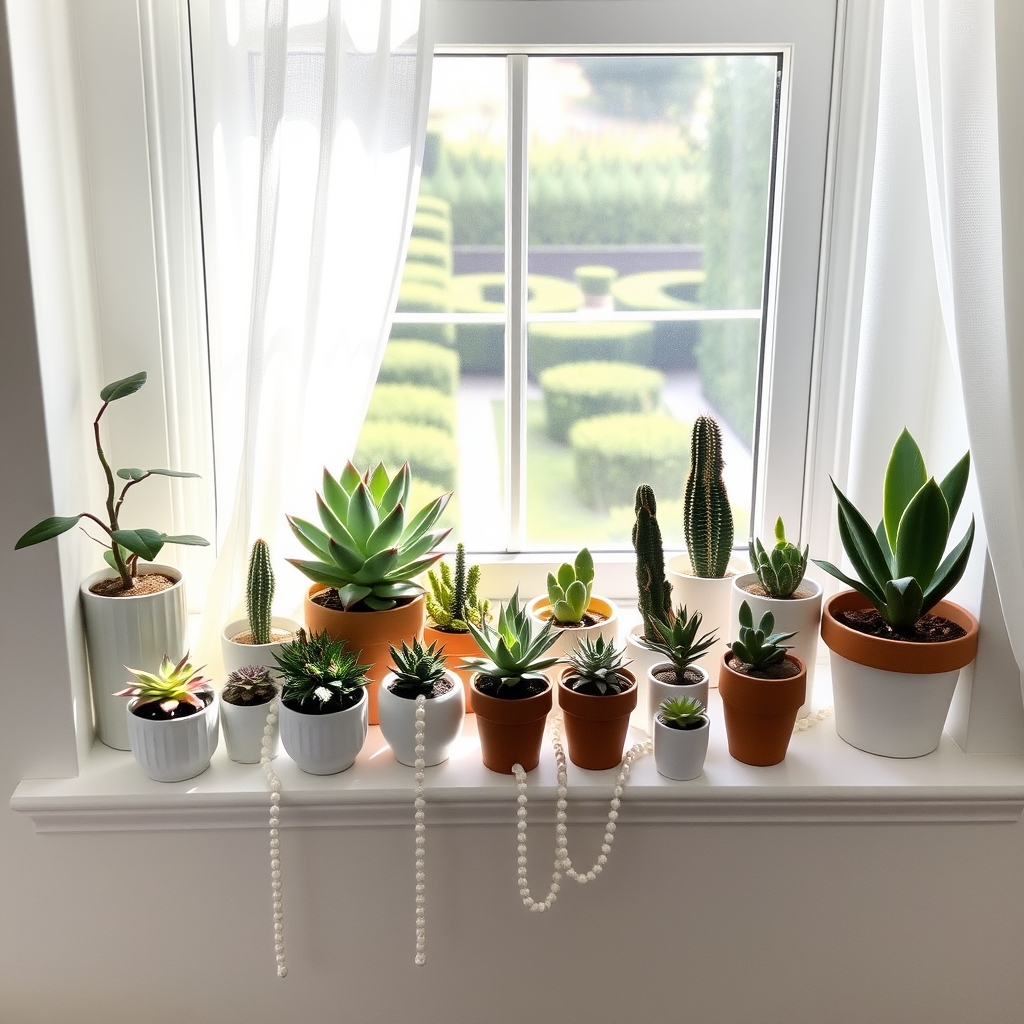
Window sills adorned with sun-loving plants create natural focal points while maximizing natural light exposure. Popular varieties like succulents, cacti, herbs, and small tropical plants thrive in these sunny spots, forming living displays that complement both modern and traditional interiors.
The arrangement can be enhanced by varying plant heights, using decorative pots, and grouping specimens with similar water needs. Trailing plants like string of pearls or pothos can cascade down the sides, adding vertical interest.
This placement not only beautifies the space but also ensures optimal growing conditions for light-demanding plants, creating an effortless blend of form and function in home decor.
Group Plants in Odd Numbers
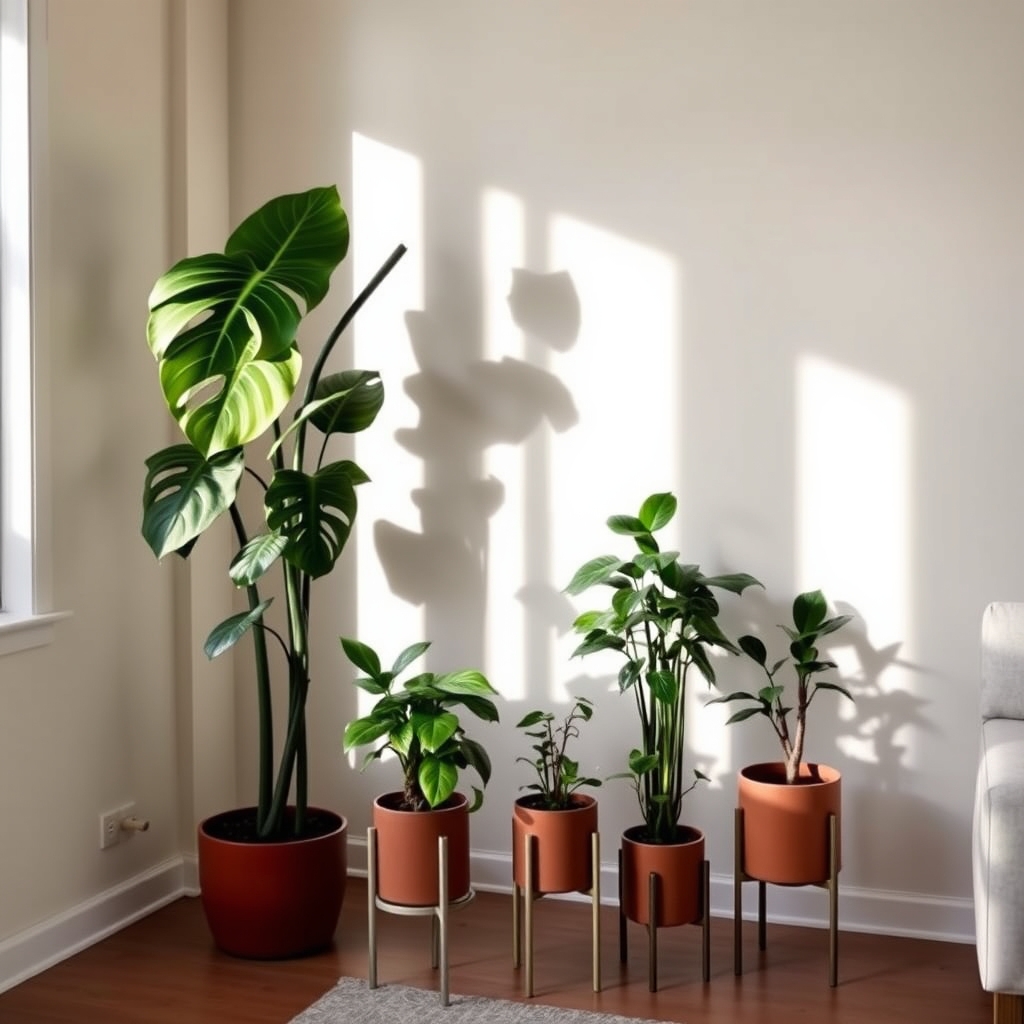
Grouping plants in odd numbers (3, 5, 7, etc.) creates a visually appealing and naturally balanced arrangement.
This design principle works because odd-numbered groupings appear more dynamic and organic than even-numbered ones, drawing the eye across the display in a natural movement.
Plants of varying heights, textures, and sizes clustered in odd numbers form an asymmetrical yet harmonious composition that prevents the arrangement from looking too rigid or formal.
Common applications include clustering three different-sized potted plants on a windowsill, arranging five small succulents on a coffee table, or creating a corner display with seven plants of ascending heights.
Use Decorative Containers as Design Elements
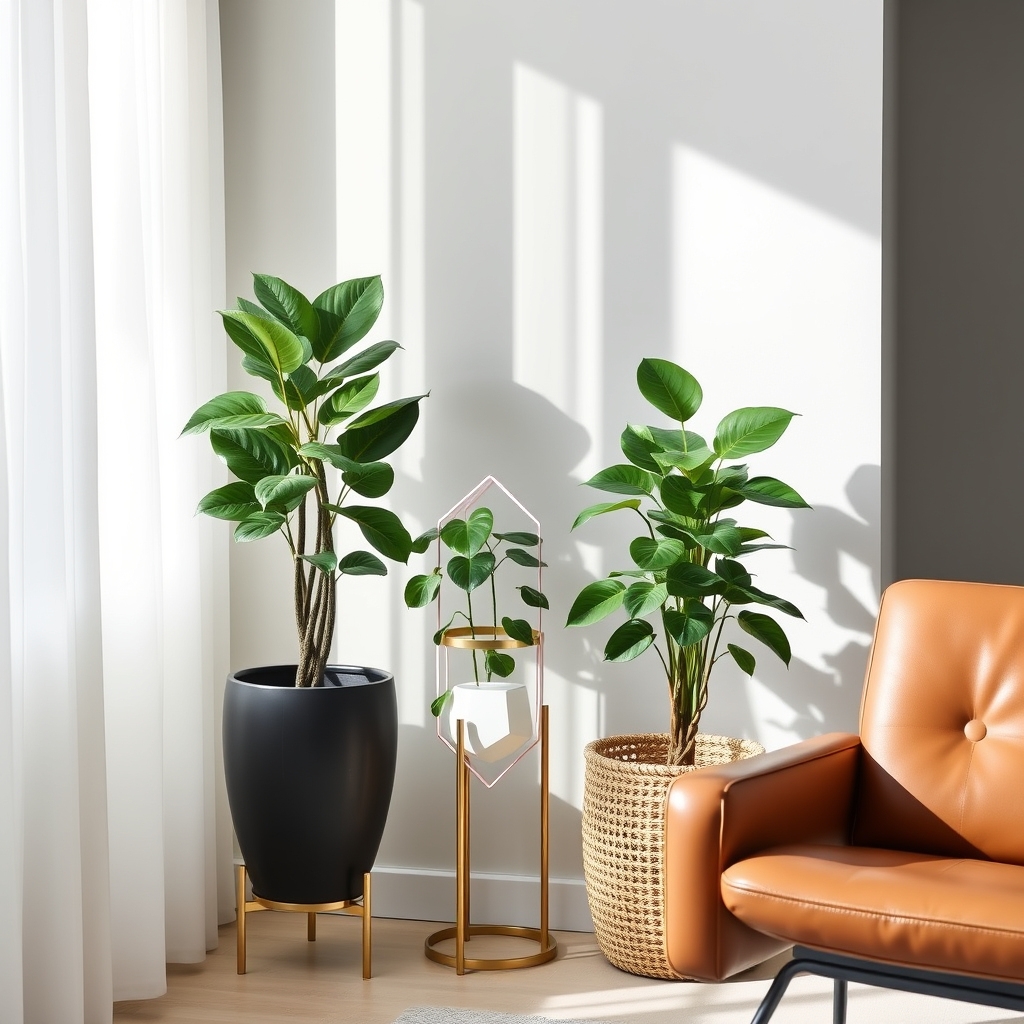
Using decorative containers as design elements transforms ordinary houseplants into striking decor pieces. Containers can range from sleek ceramic pots and metallic planters to vintage vessels, woven baskets, and geometric terrariums.
These vessels complement both the plant and existing room aesthetics while adding visual interest through texture, color, and form.
Key features:
- Various materials: ceramic, metal, glass, wood, concrete
- Multiple styles: modern, rustic, bohemian, industrial
- Different sizes and shapes for visual hierarchy
- Coordinated colors to match room design
- Textural elements like patterns, ridges, or woven details
- Elevated stands or hanging options for varied display heights
- Drainage considerations built into decorative design
- Mixed container groupings for eclectic arrangements
The container choice can dramatically impact the overall presentation, turning simple plants into sophisticated focal points while maintaining functionality for plant health.
Layer Plants With Furniture Pieces
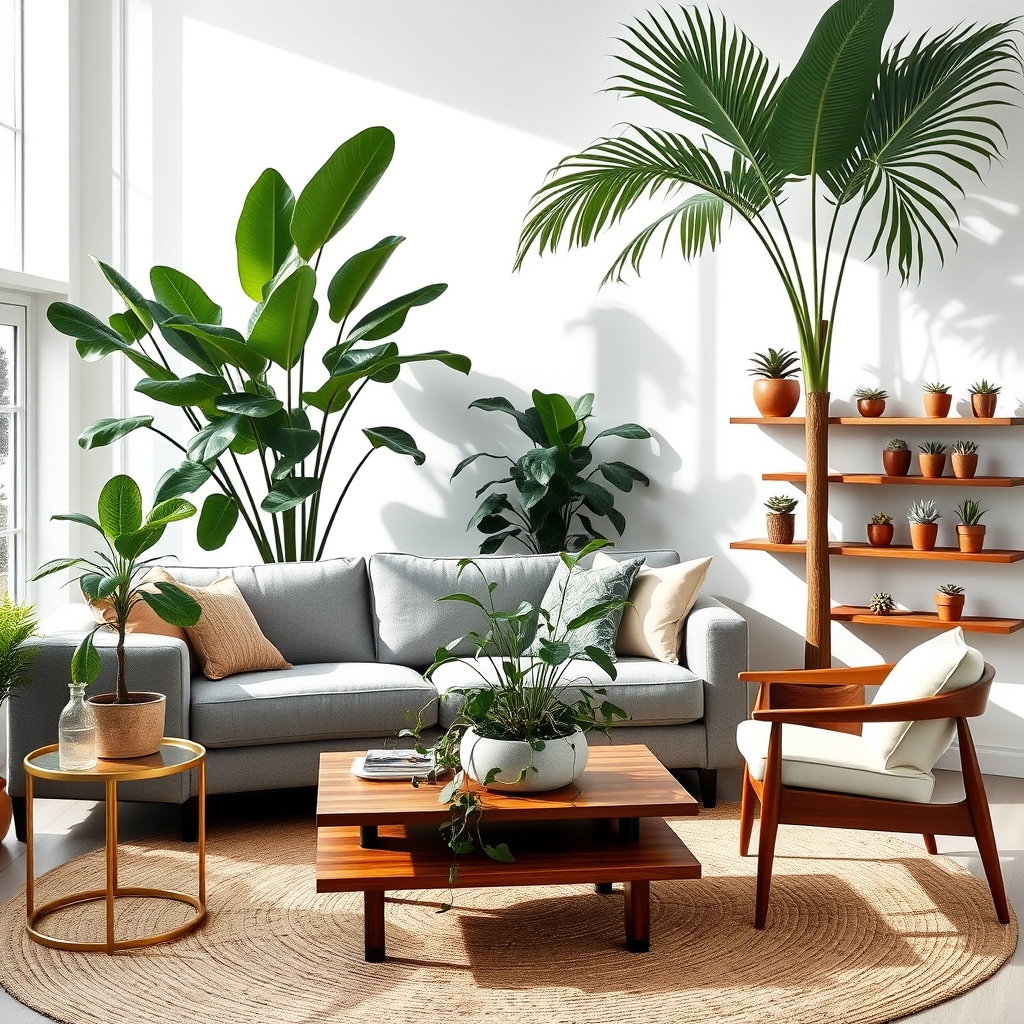
Layering plants with furniture pieces creates visual depth and dimension in a room by strategically placing greenery at different heights and positions around furniture.
Plants can be positioned behind sofas, beside chairs, or underneath side tables to create a natural, multi-level display. Tall plants like fiddle leaf figs or palm trees work as dramatic backdrops, while smaller potted plants can fill empty corners or rest on furniture surfaces.
This technique transforms ordinary furniture arrangements into more dynamic spaces where plants and furnishings complement each other, effectively blending natural and manufactured elements into a cohesive design scheme.
Unique features of this approach include:
- Creates natural frames around furniture
- Adds vertical interest to room layouts
- Softens hard furniture lines with organic shapes
- Maximizes space usage through vertical gardening
- Establishes distinct zones within larger spaces
Design Plant-Focused Centerpieces
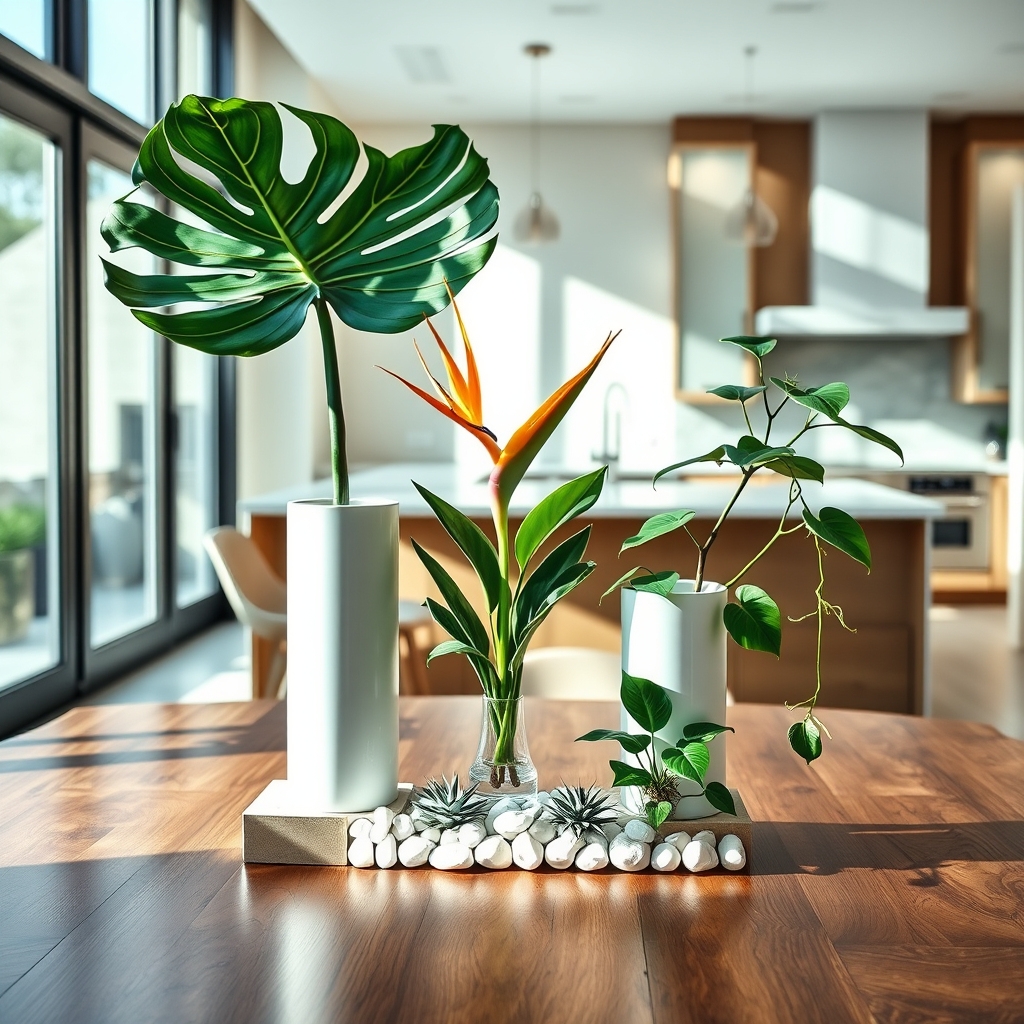
Plant-focused centerpieces serve as striking focal points for tables, shelves, or mantels while incorporating natural elements into interior spaces.
These arrangements typically feature one dominant plant or several complementary plants arranged in decorative containers, often enhanced with elements like stones, moss, or decorative branches.
Key characteristics include varying heights, textures, and colors of plants to create visual interest, while maintaining proportion appropriate to the display area.
Common designs range from minimalist succulent gardens in geometric vessels to lush tropical arrangements in ornate containers.
The centerpieces can be permanent installations using living plants or temporary displays incorporating cut foliage, allowing flexibility in seasonal changes and maintenance requirements.
Transform Empty Corners With Statement Plants
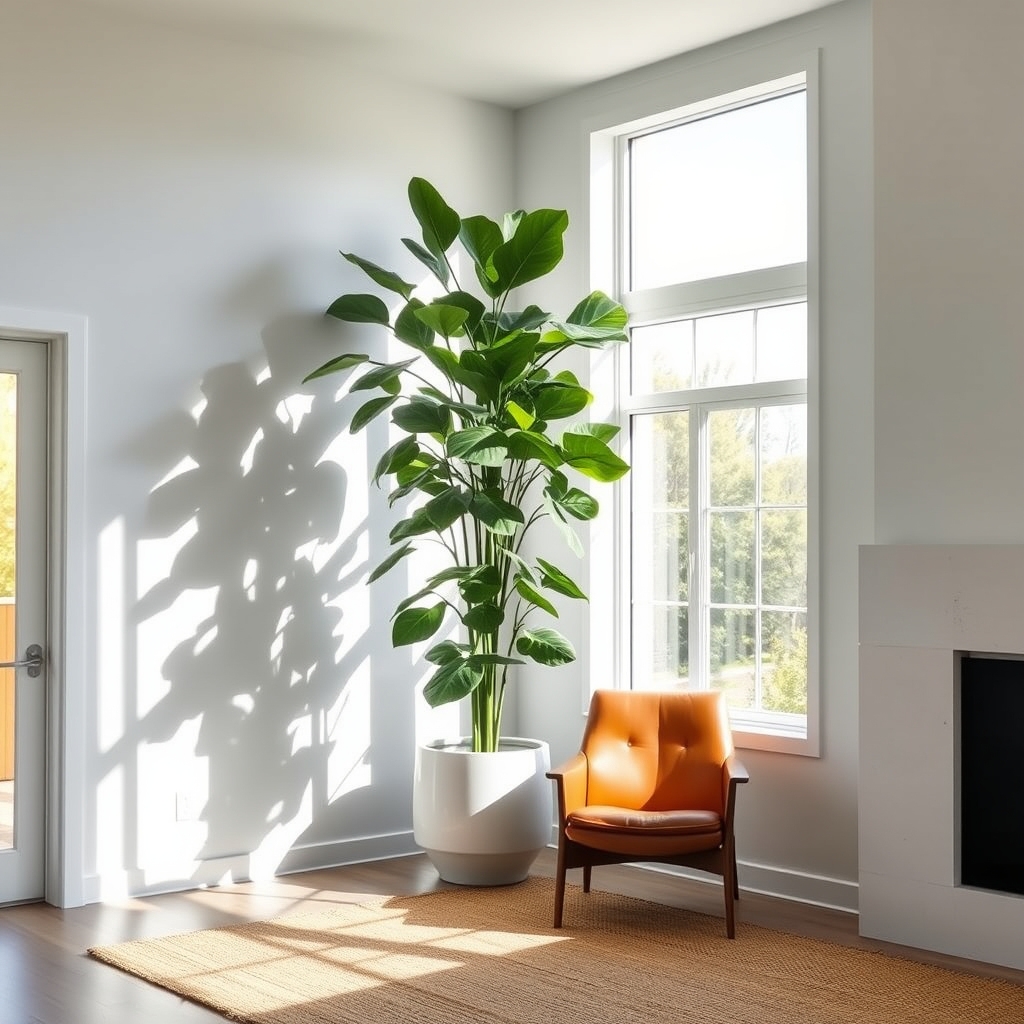
Large, architectural plants strategically placed in room corners create visual interest and maximize underutilized spaces.
Tall plants like fiddle leaf figs, bird of paradise, or monstera deliciosa command attention with their striking leaves and impressive height. These statement plants draw the eye upward, adding vertical dimension while softening harsh corner angles.
Position plants in decorative planters that complement the room’s style, and ensure proper lighting conditions for healthy growth.
Empty corners become dynamic focal points that anchor the room’s design and bring natural elements into previously blank spaces.
Incorporate Plants in Bathroom Spaces

Adding plants to bathroom spaces creates a spa-like atmosphere while taking advantage of the naturally humid environment.
Strategic placement includes windowsills, countertops, shower ledges, and hanging installations from the ceiling or walls. Moisture-loving varieties like ferns, orchids, peace lilies, and bamboo thrive in bathroom conditions. Small succulents work well on limited counter space, while trailing plants like pothos can cascade from high shelves.
Wall-mounted planters or vertical gardens maximize space in compact bathrooms. The greenery softens the typically hard surfaces of bathrooms while helping to purify the air and absorb excess moisture.
Essential considerations include adequate lighting, proper drainage, and selecting plants that can tolerate temperature fluctuations and low-light conditions when natural light is limited.
Arrange Floating Shelves for Plant Displays
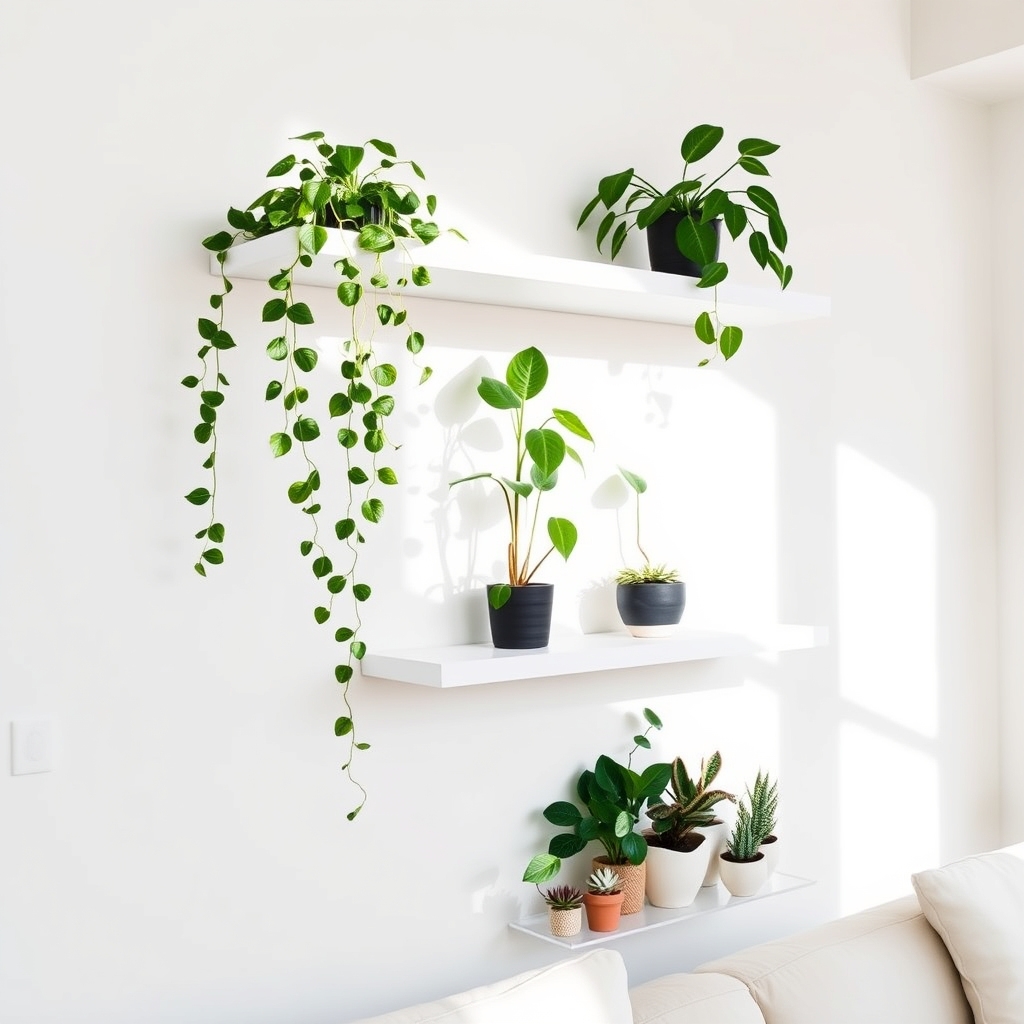
Floating shelves mounted at varying heights create dynamic plant displays that appear to hover effortlessly on walls.
These minimalist shelves, installed without visible brackets, offer a clean, modern aesthetic while maximizing vertical space for plant arrangements.
The design allows for layered greenery displays, with trailing plants cascading downward and upright specimens positioned strategically across different levels.
Multiple shelves can be arranged in geometric patterns or asymmetrical compositions, providing flexibility to showcase both small succulents and larger potted plants.
The absence of visible support systems gives plants a suspended, weightless appearance, making them focal points in any room while keeping floor space open.
